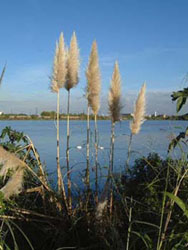New tool takes guesswork out of storm water management
The DAYWATER project has been set up to examine storm water pollution control. As an extension to this study, scientists at Middlesex University in the UK have collaborated to provide a best management practice catalogue. The aim of this online service is to offer a support tool to assist end-users on storm water management practices. The online tool provides a database with detailed information on 15 structural best management practices (BMP), such as infiltration systems, ponds, basins and permeable surfaces. It also gives useful guidelines and information on 5 non-structural BMPs including snow management and cleaning practices. The assistance it provides has been designed to adapt to the individual user's level of expertise on the subject. It provides a comprehensive description of a variety of system types, designs and modes of operation. It has many potential users, such as landscape architects who are responsible for incorporating urban drainage systems into their designs of new or existing developments. For these practitioners, the catalogue provides clear information on both BMP performance and operation as well as on maintenance requirements. Landscape architects can compare the costs associated with different drainage options and can access photographs of real life examples of systems already in use in Europe. The database can also be used to compare particular differences between structural and non-structural systems. This can indicate to the practitioner when there is a strong practical advantage to using one system over the other. It is expected that this will be an indispensable tool to those involved with urban storm water management.







